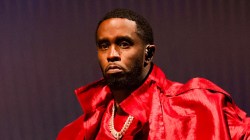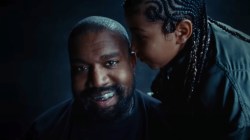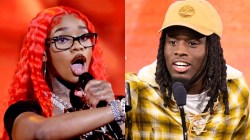“Pray to the Heaven’s, .357’s to the sky/And I hope I’m forgiven for thug livin’ when I die/I wonder if Heaven got a ghetto for thug niggas?/A stress-free life and a spot for drug dealers” —2Pac from “If I Die 2 Nite”
The date was Sept 8, 1996. 21 some odd years ago. I was pacing, notebook in hand, outside University Medical Center in Las Vegas, Nevada where Tupac Amaru Shakur lay inside clinging to life. Like Tupac, I was 25 years old. I was born June 17, 1971, in Oakland, California. Tupac Shakur was born June 16, 1971, in New York — a day apart.
Eerie circumstances to say the least.
Allow me to properly put all this into perspective.

AD LOADING...
That September day, I was on assignment for the Los Angeles Times where I worked as a young reporter in the Metro section. I was there to cover the shooting and piece together how and why the world’s hottest rapper had been shot multiple times on the Vegas strip following a Mike Tyson fight.
Pac had been shot hours after he, Suge Knight, and the posse of Death Row Piru gang members stomped Compton Southside Crips gang member Orlando Anderson in the MGM lobby.
We all thought Pac would live. “Nobody can kill Pac” was the motto. Prior to the Vegas shooting, he had survived the Quad Studios attack on his life. But this gangbanging shit doesn’t care if you Tupac, Tyrone from the Rolling 60’s, or full-blooded Piru – bullets have no name. The days following Tupac’s shooting, I saw Kidada Jones, Yaki, Young Noble, my ninja E.D.I., Rev. Jesse Jackson, MC Hammer and more outside the hospital. I even spoke with his mother, Afeni Shakur as she walked in and out of the hospital.
Six days later, Afeni took Tupac off life support, citing how Pac had been “fighting” his whole life and now it was time to let him go in peace. Not long after Pac passed, I sat on the porch of my crib with two bottles of Olde English 800. (That’s what we drank back then!) As an ode to the Thug Life classic, “Pour Out a Lil Liquor,” I sipped one of the brews and spilled the contents of the other out in the street to honor his memory.
Today, I am a co-producer and on-air investigator for the new A&E series Who Killed Tupac?, a six-part show whose season finale airs tonight. But back in 1996, I was also a freelancer for The Source Magazine and I wrote his memorial cover story. I can still recall contacting now FOX Empire writer Carlito Rodriguez (then Source writer) and informing him that Pac was dead.

AD LOADING...
Tupac remains an icon but yet no one had ever been arrested or tried for his murder. More than two dozen people have been killed with tie-ins to the initial shooting. A gang battle in Compton ensued days after he was shot. The streets, not the police, were handling it. Compton gangs Southside Crips and Piru Bloods were settling differences with gunplay. But there was still no official legal justice for him.
Since 1996, I’ve stayed on the case writing articles in magazines like Vibe and even producing TV shows about Tupac for BET, like this 10-year anniversary show.
I’ve become a producer of other TV shows like Unsung on TV One, the Olympics on NBC and BET’s American Gangster docuseries, where I produced an episode about Tupac’s stepfather Mutulu Shakur.
Since 1996 the murder of Tupac has been a case shrouded in mystery, intrigue, and danger. And it’s been a personal goal of mine to get justice for my Gemini brother who I identified with on a deeper level because I too was a young Black man who grew up with no father, a mother on drugs and in the shadows of Black Panther Party. Like Pac, I had guns pulled on me and never thought I would make it past the age of 25. I’m sure he knew that anybody with a Shakur last name and got away with shooting two cops would forever be a target for the police, for the government. For America. Pac knew this and predicted 25-years-old would be his final age on earth.

AD LOADING...
I wrote an article about this paradox in the Los Angeles Times when living to see 25 seemed truly unimaginable.
Honestly, I never thought there would be justice for the beloved rap icon. Similar to the murder of The Notorious B.I.G., Pac would just be another young Black man killed in a drive-by shooting.
But now, justice is finally being served. In our groundbreaking series on A&E, I joined a team of journalists who trekked across America from Las Vegas to New York to Los Angeles, interviewing and searching for clues to what actually happened that fateful September night in 1996. Led by civil rights attorney Benjamin Crump, attorney for Trayvon Martin, Tamir Rice, and Michael Brown, our team of investigators performed the most thorough investigation ever. And what did we discover? That the LAPD found the murder weapon and allegedly decided to never send it to Las Vegas. Or maybe Vegas had it and never wanted to admit it? No matter what, another Shakur had been done in by the police.
“Due process doesn’t often come into play when the perception is this – that this is Black-on-Black violence, or crime, or carnage. There is no sense of urgency because why? A black man was killed. Another nigga dead and another nigga killed him.” — Michael Eric Dyson from Who Killed Tupac?

AD LOADING...
Like Mother, Like Father, Like Son.
I know the conspiracy theorists will continue to rant. They say Biggie or Puff or Suge or the government pulled the trigger, but Tupac Shakur was a victim of Black-on-Black violence. A gangbang drive by to be exact. We need to accept that even if Tupac was not a gang member, that night he played gangster and it cost him his life.
Orlando Anderson shot Tupac. Two years later he was also shot and killed. The cycle of Black-on-Black violence continued.

AD LOADING...
https://www.youtube.com/watch?v=SbO7ypH8_QM
One of my favorite moments from the Who Killed Tupac? series was in episode one when my E.D.I. from the Outlawz, was with Vegas cop and first responder Chris Carroll on the bridge near where Tupac was shot. An astounding 20 years later, a cop trying to do his job and one of Tupac’s best friend recanted their own stories of what happened that night. Carroll relayed how he didn’t know what was going on and held Suge at bay with his gun. Blood was popping out of Suge’s head as he tried to get Tupac back into the BMW. A bleeding Tupac was still in the car, slumped up against the door. E.D.I. remembered something totally different: cops seeing everyone as L.A. gangbangers and ordering them on the ground with guns. In that moment, each man saw his own humanity. Another version of the same experience from another person’s perspective.
Another favorite moment was that of a fan being interviewed outside the hospital. “Pac was one of our representatives,” he said. Like Malcolm, like Martin. And now Tupac is gone. That was our voice.”

AD LOADING...
Indeed it’s 2017 and many of the themes Tupac addressed like war, American hypocrisy, racial strife and police brutality are more rampant than ever before with cops killing brothers and sisters in the streets and a fascist government led by a polarizing bigot. It’s as if you could take a snapshot from 1996 and it would be the same picture today.
“Once my life is gone it’s gone, can’t nobody give it back to me, Not the judge, not the president, not the governor. They can’t do nothing but come to my funeral and talk pretty about how Black people suffer.” — Tupac Shakur from 1994 BET interview
Like Tupac, I am a child of the Black Panther Party. I grew up in the shadow of Huey Newton. Tupac, as Jada Pinkett Smith once told me, ‘was like a baby Huey Newton.’
Charismatic, passionate and possessed with an undeniable love for Black people. But Pac was a troubled man whose demons inevitably lead to his death. Many of his lyrics specifically confronted the perils of an early death. And even in his last moments as he was bleeding to death, he showed defiant by telling the officer Carroll, “fuck you” when asked who shot him. Tupac was pure Hip Hop.

AD LOADING...
Upon learning the LAPD had the gun, I was both outraged and unfazed.
However, whether or not the LAPD is brought to trial for covering up what they knew, or if Las Vegas officially charges Orlando Anderson for the murder and Keefe D as an accessory, I finally feel vindicated. They can no longer say they have no evidence. So former Vegas detective Lt. Wayne Petersen (who was lead on the case for a while) remember when you said in episode one of the A&E series that “what if the murder weapon showed up? They would have evidence to work on.”
What will you do now, Lt. Petersen?
I’m into action. I’m urging all Tupac fans to call the LAPD homicide division and the Las Vegas homicide division and demand “exceptional clearance,” which would publically charge Anderson with the murder of Tupac Shakur. That would be any real due process. We need to speak up when we see foul play, especially of our own because no one (not even the police at times) will follow through. Persistence is key here. The unattainable — and unimaginable, can happen.

AD LOADING...
Hopefully, this new information about the LAPD hiding the murder weapon that killed Tupac can easily tie to Anderson. No matter what, that Black Panther mentality that Tupac and I grew up with still frames my mind and outlook on the world and the family of Afeni Shakur deserves closure.
Do for self. Do for your community. Be Black and proud. All Power To The People.
Rest in power, Tupac Amaru Shakur…
https://www.youtube.com/watch?v=Lka9dwDRrdA

AD LOADING...
A&E’s Who Killed Tupac? grand finale airs tonight at 1Opm EST/PST.
Emmy and NAACP winning producer/director and Oakland nativeP. Frank Williamsis the former Executive Editor of The Source Magazine and produces shows like A&E’s Who Killed Tupac? and is VP of Content and Strategy for HipHopTV.com. You find him on Twitter @pfrankwilliams.



